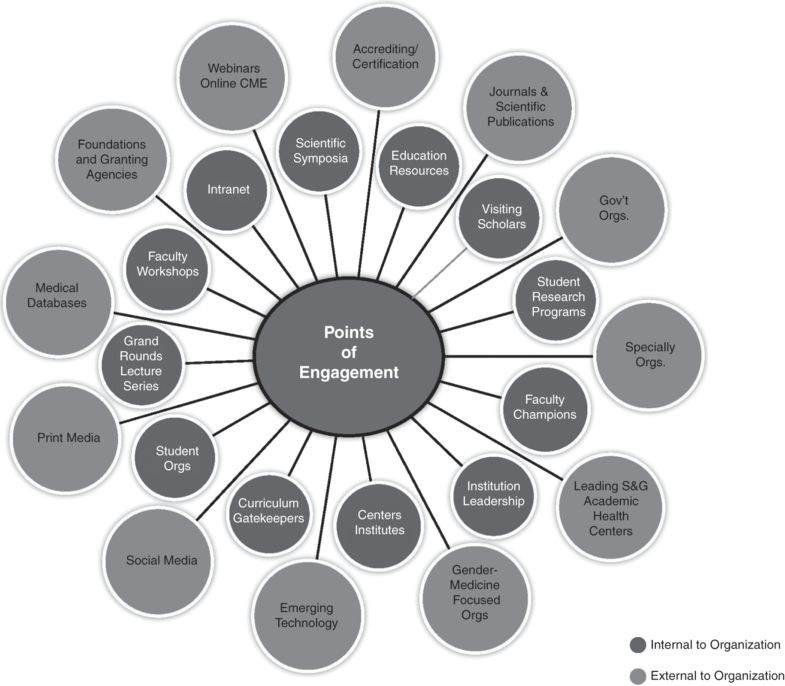From the bench to the bedside: translational education
Points of Engagement: Creating Culture Change
Altering the culture of a one-sex model within medicine will require engagement on many fronts. Figure 14.2 represents proposed points of engagement required to create real and lasting change. As stated in the Introduction, there is a growing momentum to ensure sex balance in research. This momentum has been increasing over the past two decades, as evidenced by the development of sex- and gender-based medicine (SGBM) professional organizations, textbooks, and online resources (Table 14.1). For example, in the United States, a group of academic and nonprofit organizations, researchers, clinicians, and educators have come together to create the Sex and Gender Women’s Health Collaborative (www.sgwhc.org). This group’s mission is to ensure integration of sex and gender knowledge into medical education to improve health care for all. Such programs will gradually increase the visibility of sex and gender topics in medicine and facilitate the integration of these topics into medical school and continuing medical education curricula.

Defining sex and gender health
| Web Based Continuing Medicine Education Courses |
|
| Web Based Curriculum Products |
|
| Evidence Based Scientific Publication Database and Search Engine Tools |
|
| Professional Membership Organizations |
|
| Textbooks |
|
| Web Based Research and Educational Resources |
|
| Gender and Medication Effects |
|
Translational Health Education
What is translational education? Before answering this question, let us review the definition of translational research from Merriam-Webster: “medical research that is concerned with facilitating the practical application of scientific discoveries to the development and implementation of new ways to prevent, diagnose, and treat disease, also called translational medicine.”3 We propose the following definition for translational health education: health care education that integrates the practical application of scientific discoveries to improve the health and well-being of patients through prevention, diagnosis, and treatment of disease. Coupling SGBM with translational health education ensures that practitioners first consider, and then apply, sex and gender evidence to health and disease.
Stay updated, free articles. Join our Telegram channel

Full access? Get Clinical Tree







